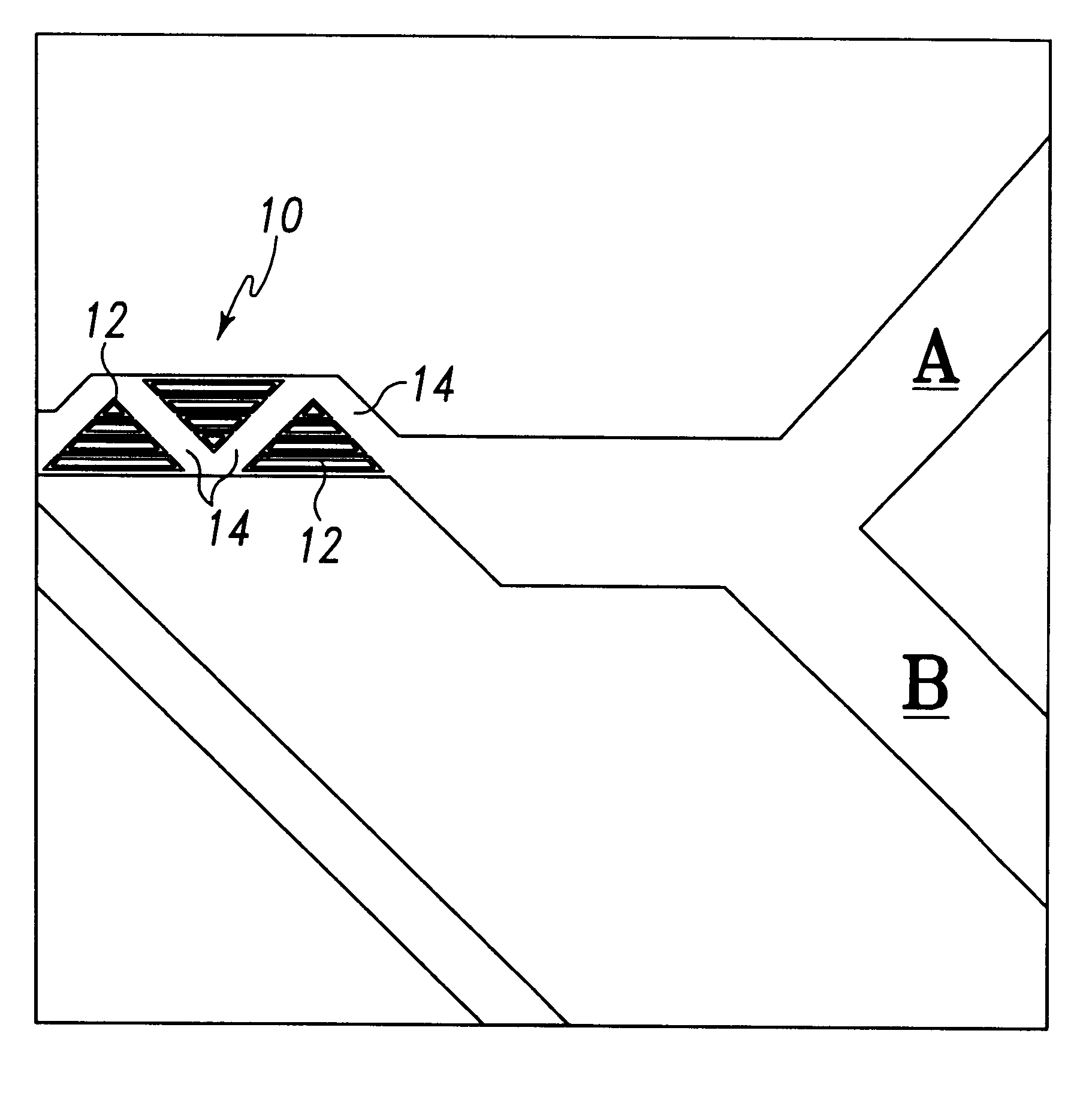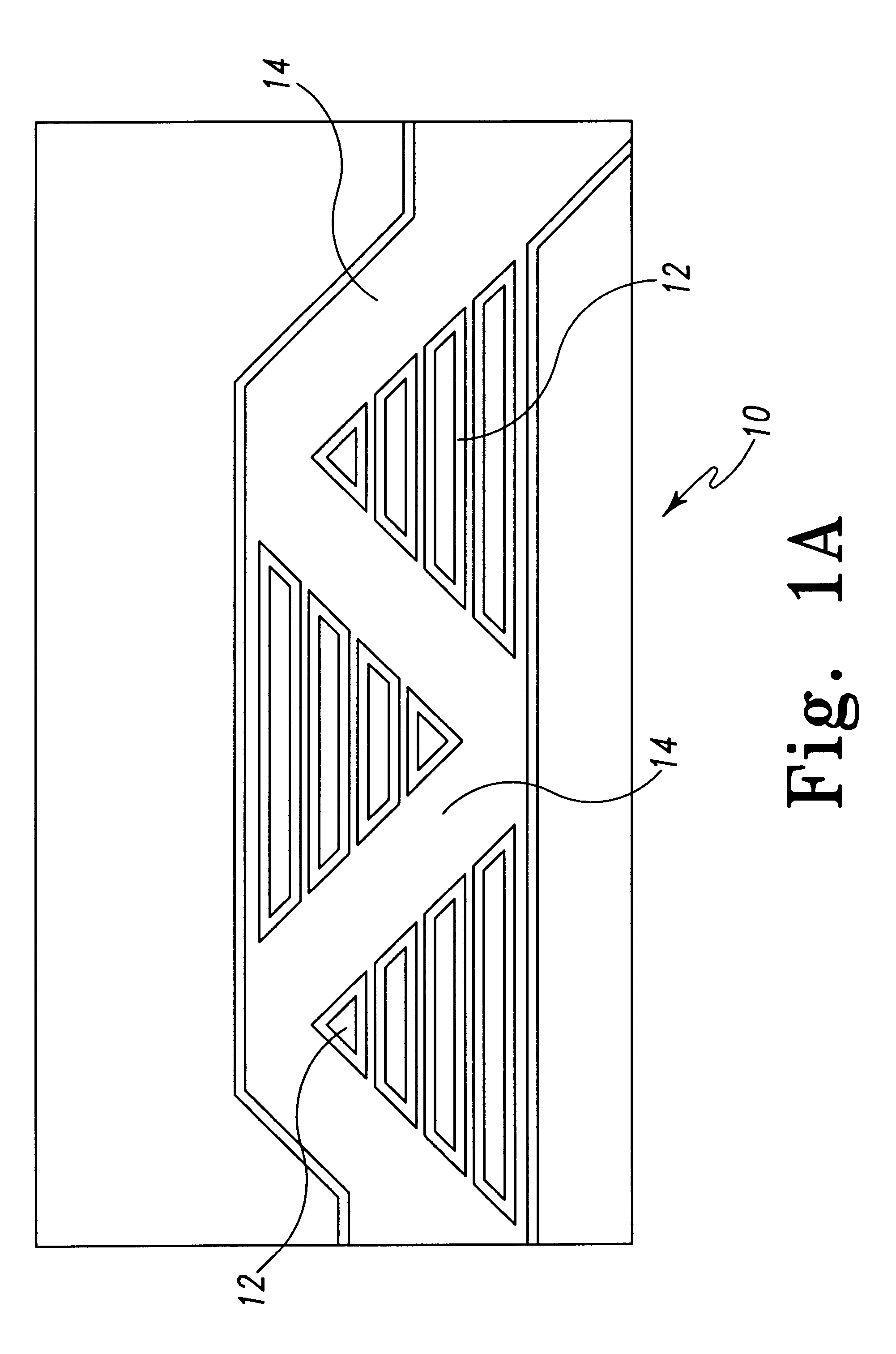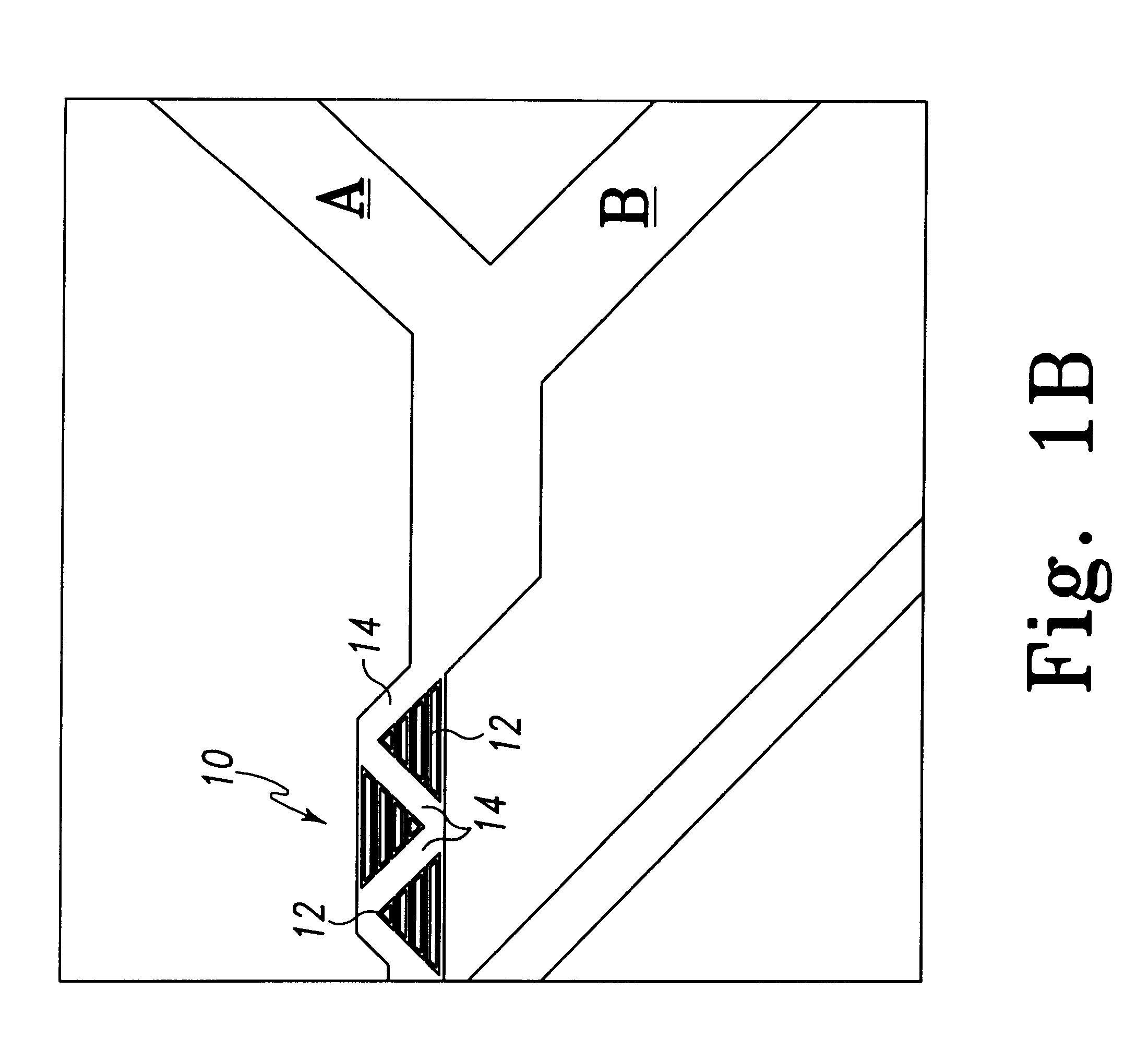In situ micromachined mixer for microfluidic analytical systems
a microfluidic and mixer technology, applied in the field of microfluidic micromachined mixers, can solve the problems of providing a macroscopic level of mixing, difficult operation of microfluidic systems, and inability to install dynamic mechanical mixers, etc., and achieves high efficiency.
- Summary
- Abstract
- Description
- Claims
- Application Information
AI Technical Summary
Benefits of technology
Problems solved by technology
Method used
Image
Examples
Embodiment Construction
For the purposes of promoting an understanding of the principles of the invention, reference will now be made to the embodiment illustrated in the drawings and specific language will be used to describe the same. It will nevertheless be understood that no limitation of the scope of the invention is thereby intended, and alterations and modifications in the illustrated device, and further applications of the principles of the invention as illustrated therein are herein contemplated as would normally occur to one skilled in the art to which the invention relates.
Transport channels in microfluidic systems are most frequently formed by wet etching roughly 10-20 .mu.m deep channels of 100 .mu.m width into an inorganic substrate and enclosing them with a transparent plate. Polysilicon, glass, and quartz are the materials of choice in microfabricated, microfluidic systems because of their wide use in electronics and micro-electromechanical systems and because of the advancement of the tech...
PUM
 Login to View More
Login to View More Abstract
Description
Claims
Application Information
 Login to View More
Login to View More - R&D
- Intellectual Property
- Life Sciences
- Materials
- Tech Scout
- Unparalleled Data Quality
- Higher Quality Content
- 60% Fewer Hallucinations
Browse by: Latest US Patents, China's latest patents, Technical Efficacy Thesaurus, Application Domain, Technology Topic, Popular Technical Reports.
© 2025 PatSnap. All rights reserved.Legal|Privacy policy|Modern Slavery Act Transparency Statement|Sitemap|About US| Contact US: help@patsnap.com



